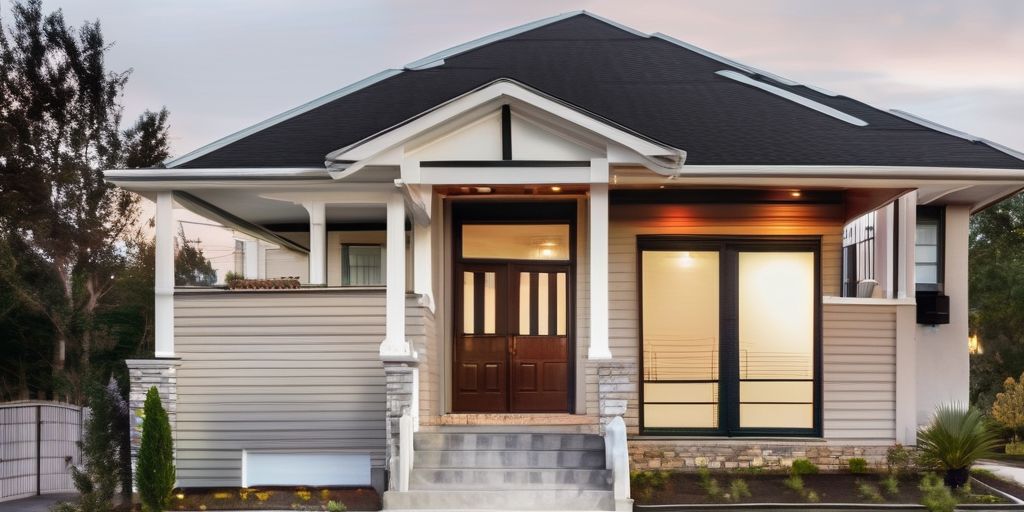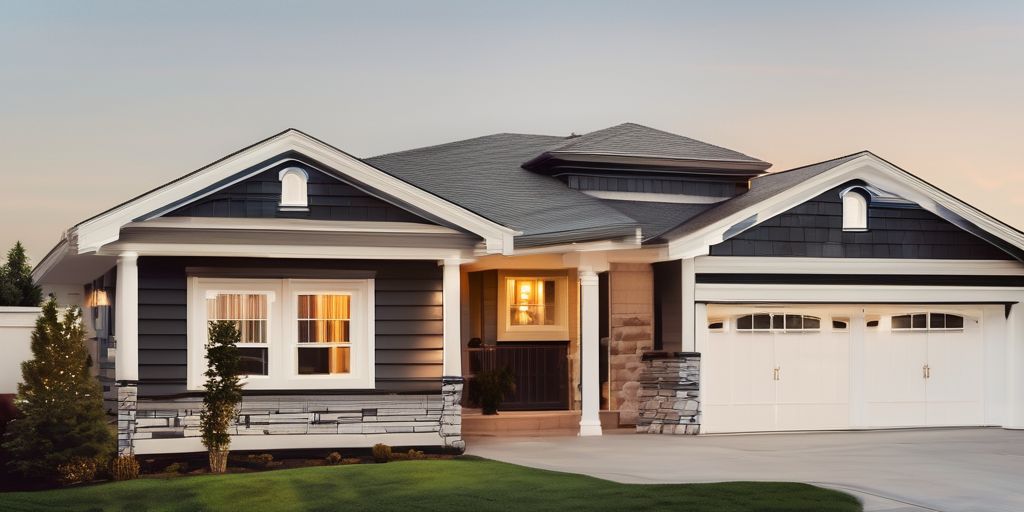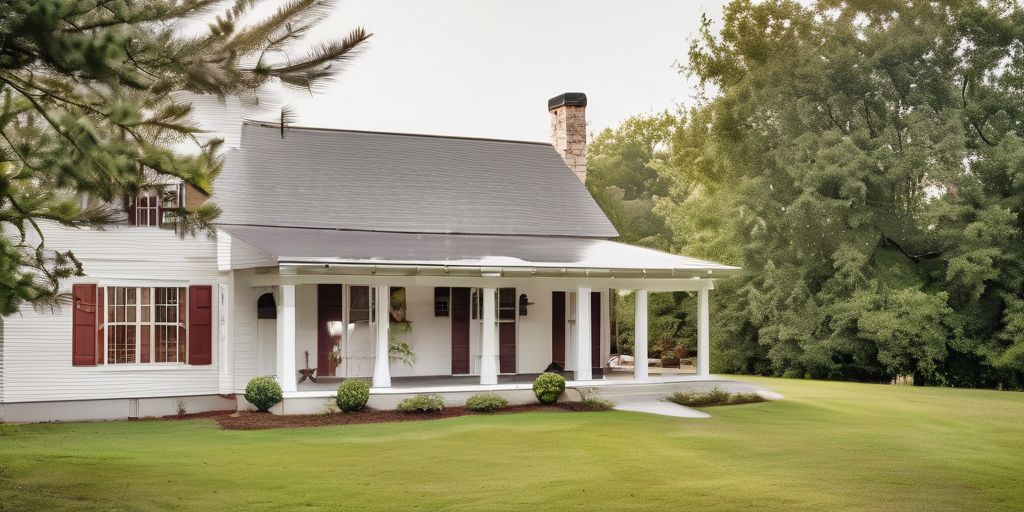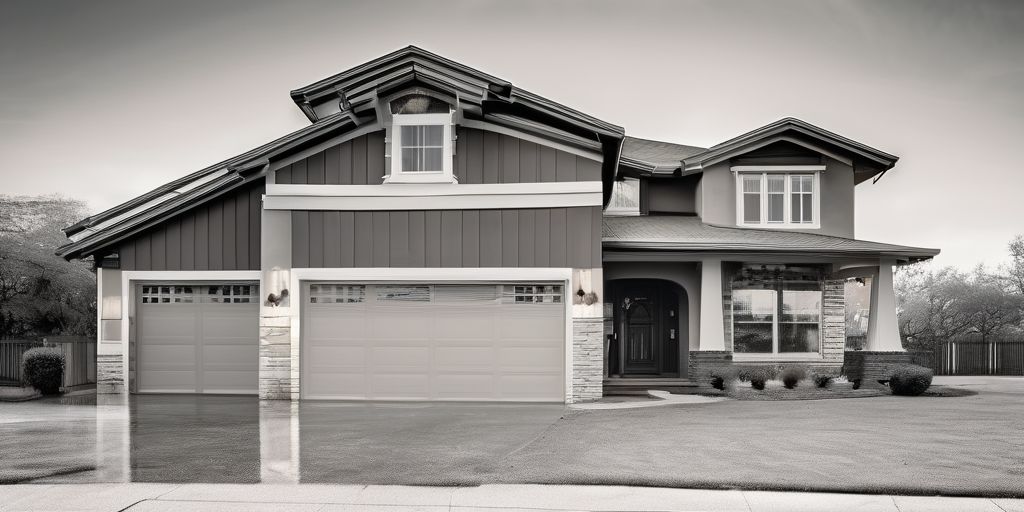Spray painting the exterior of your house is a cost-effective and efficient way to update its appearance. Using an airless paint sprayer can significantly reduce the time and effort required compared to traditional painting methods. However, to achieve professional results and ensure safety, proper preparation and technique are essential. This DIY guide will walk you through the steps to spray paint your house exterior safely and effectively.
Key Takeaways
- Proper preparation is crucial for a successful exterior spray painting project. Clear the area, clean the walls, and mask off surfaces you don’t want to paint.
- Choosing the right equipment, including an airless paint sprayer, quality paint, and essential safety gear, will make the job easier and safer.
- Practice your spraying technique on a test surface before starting on the main areas to ensure even coverage and avoid mistakes.
- Follow safety guidelines, such as using ladders correctly and protecting yourself from paint fumes, to prevent accidents and health issues.
- After painting, clean your equipment thoroughly and store leftover paint properly to maintain your tools and preserve the quality of your work.
Preparing Your Home for Spray Painting
Clearing the Area
Before you paint the exterior of a house, it’s best to start by moving all outdoor furniture or any other items such as a grill away from the area to be sprayed. Allow plenty of space for your tools and equipment. Tape off any trim, and cover any surfaces you don’t want sprayed such as windows or shrubs with plastic.
Cleaning the Exterior Walls
Use a pressure washer and cleaning solution to wash the entire exterior surface, including any eaves or soffits, that are to be painted. Allow the surface significant time to dry. Remove any dirt, mildew, or mould, and scrape off any peeling paint.
Masking and Covering Surfaces
Using a paint sprayer for your home’s exterior means that you can cover more areas faster, but only after the prep work is done. Mask obstructions like utilities (wires, pipes, gas meters), architectural details that will be painted a different color, plants, driveways, sidewalks, and anything else that will not be painted.
Choosing the Right Equipment
Selecting the right equipment is crucial for a successful spray painting project. Here’s a guide to help you make the best choices.
Selecting an Airless Paint Sprayer
When choosing an airless paint sprayer, consider the following factors:
- Pressure Rating: Look for a sprayer with a minimum of 2700 PSI for optimal performance.
- Hose Length: A 50-foot garden hose is recommended for better reach.
- Portability: Ensure the sprayer is easy to move around your work area.
Picking the Best Paint
Choosing the right paint is essential for a durable and attractive finish. Consider these points:
- Exterior Grade: Always use paint specifically designed for exterior surfaces.
- Weather Resistance: Select paint that can withstand harsh weather conditions.
- Color and Finish: Choose a color and finish that complements your home’s exterior.
Essential Safety Gear
Safety should be a top priority when spray painting. Equip yourself with the following gear:
- Safety glasses or goggles to protect your eyes.
- Dust mask or respirator to avoid inhaling fumes.
- Spray sock or hat to cover your head.
Proper masking skills and safety measures are essential for precise spray painting. Protect adjacent areas with proper shielding and preparation for professional results.
Mastering the Spray Painting Technique
Practicing on a Test Surface
Before you start on your house, it’s crucial to practice on a test surface. This helps you get a feel for the sprayer and adjust the settings. Achieve a professional finish by testing different spray patterns and distances. Remember, consistency is key.
Spraying Eaves and Overhangs
When spraying eaves and overhangs, always start from the top and work your way down. This prevents drips and ensures even coverage. Use a ladder safely and make sure it’s stable. Prepare space by removing any obstacles and covering nearby surfaces to avoid overspray.
Using the Correct Spray Patterns
Using the correct spray patterns is essential for a smooth finish. Hold the sprayer at a consistent distance from the surface and move it in a steady, controlled manner. Avoid over-spraying by keeping the nozzle at the right angle and speed. If you notice any uneven areas, go over them lightly to even out the paint.
Mastering these techniques will not only save you time but also give your home a fresh, new look.
Safety Tips for Exterior Spray Painting
Using Ladders Safely
When using ladders, ensure they are stable and placed on a flat surface. Always maintain three points of contact to avoid falls. Use ladder stabilizers if necessary and never overreach. It’s crucial to have someone hold the ladder if possible.
Protecting Yourself from Fumes
Spray painting can release harmful fumes. Wear a respirator mask and ensure there is adequate ventilation. If you’re painting in enclosed areas, use fans to circulate the air. Protective gear like gloves and goggles is also essential to safeguard your skin and eyes.
Handling Paint and Equipment
Handle all paint and equipment with care. Store paint in a cool, dry place and keep it away from open flames. Clean your equipment thoroughly after use to prevent clogs and malfunctions. Always follow the manufacturer’s instructions for both the paint and the sprayer.
Safety is paramount when undertaking any DIY project. Proper precautions can prevent accidents and ensure a smooth painting process.
Post-Painting Cleanup and Maintenance
Cleaning Your Sprayer
After completing your spray painting project, it’s crucial to clean your sprayer thoroughly to ensure its longevity and optimal performance for future use. Follow these steps:
- Flush the System: Pump water through the sprayer until it runs clear. This removes any residual paint from the system.
- Disassemble Parts: Take apart the nozzle, filters, and other removable components for a more thorough cleaning.
- Use a brush to scrub away any paint residue from the parts.
- Reassemble the sprayer once all parts are dry.
Storing Leftover Paint
Proper storage of leftover paint can save you money and time for future touch-ups. Here are some tips:
- Seal Tightly: Ensure the paint can is sealed tightly to prevent air from entering and drying out the paint.
- Label Cans: Mark the paint cans with the date and the area where the paint was used for easy identification later.
- Store in a cool, dry place away from direct sunlight.
Maintaining Your Painted Surfaces
Regular maintenance is key to keeping your newly painted surfaces looking fresh and vibrant. Consider these seasonal tips and maintenance advice:
- Inspect Regularly: Check for any signs of wear or damage, especially after harsh weather conditions.
- Touch-Up Tips: Keep a small amount of leftover paint for quick touch-ups to address any minor chips or scratches.
- Apply protective coatings to high-traffic areas to extend the life of the paint.
Consistent maintenance and timely touch-ups can significantly prolong the life of your exterior paint job, ensuring your home looks its best year-round.
Common Mistakes to Avoid
Over-Spraying
One of the most common mistakes is over-spraying. This happens when you apply too much paint in one area, causing drips and an uneven finish. To avoid this, make sure to keep the sprayer moving at a consistent speed and distance from the surface. Overlapping by 50% with each pass can help ensure even coverage.
Ignoring Weather Conditions
Weather plays a crucial role in the success of your spray painting project. Painting on a windy or rainy day can lead to uneven paint application and longer drying times. Always check the weather forecast and choose a day with mild, dry conditions for the best results.
Skipping Surface Preparation
Proper surface preparation is essential for a smooth and long-lasting finish. Skipping steps like cleaning, sanding, and priming can result in poor paint adhesion and a less durable finish. Make sure to thoroughly prepare the surface before you start painting to avoid these issues.
Avoiding these common mistakes can save you time and effort, ensuring a professional-looking finish for your home’s exterior.
When it comes to exterior spray painting, avoiding common mistakes can save you time and money. From improper masking to not considering weather conditions, there are several pitfalls that can affect the quality of your paint job. To ensure a flawless finish, trust the experts at We Paint Siding. Visit our website to learn more about our professional services and how we can help you achieve the perfect look for your home.
Conclusion
Spray painting the exterior of your house can be a rewarding and efficient way to give your home a fresh, updated look. By following the steps outlined in this guide, from thorough preparation to careful spraying and proper clean-up, you can achieve professional-looking results even as a DIY enthusiast. Remember, safety is paramount, so take all necessary precautions to protect yourself and your surroundings. With the right tools, a bit of patience, and attention to detail, you’ll be able to transform your home’s exterior with ease. Happy painting!
Frequently Asked Questions
What type of paint is best for exterior spray painting?
For exterior spray painting, it’s recommended to use high-quality acrylic latex paint as it provides excellent durability and weather resistance.
How do I prepare the exterior walls before spray painting?
Start by moving all outdoor furniture and items away from the area. Use a pressure washer and cleaning solution to wash the entire exterior surface, including eaves and soffits. Mask off any trim and cover surfaces you don’t want sprayed with plastic.
What safety gear do I need for spray painting my house exterior?
Essential safety gear includes safety goggles, a respirator mask, gloves, and protective clothing to shield yourself from paint fumes and overspray.
Can I use a regular ladder for spray painting high areas?
Yes, but ensure the ladder is stable and appropriate for the height you need to reach. Having someone to spot you can enhance safety when climbing to higher parts of the house.
How can I avoid over-spraying?
To avoid over-spraying, practice on a test surface first to get a feel for the sprayer. Maintain a consistent distance from the surface and use controlled, even strokes.
What should I do with leftover paint after the project?
Store leftover paint in a cool, dry place with the lid tightly sealed. Label the paint can with the date and color for future touch-ups or projects.






